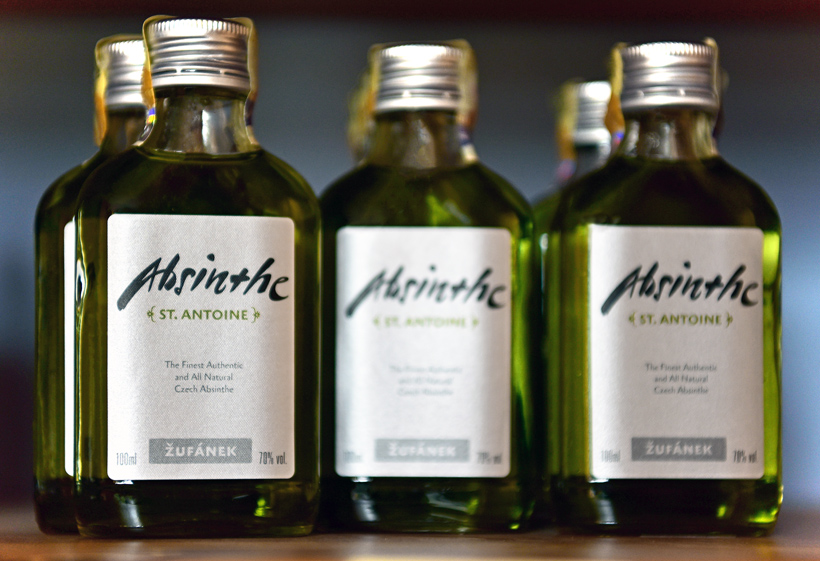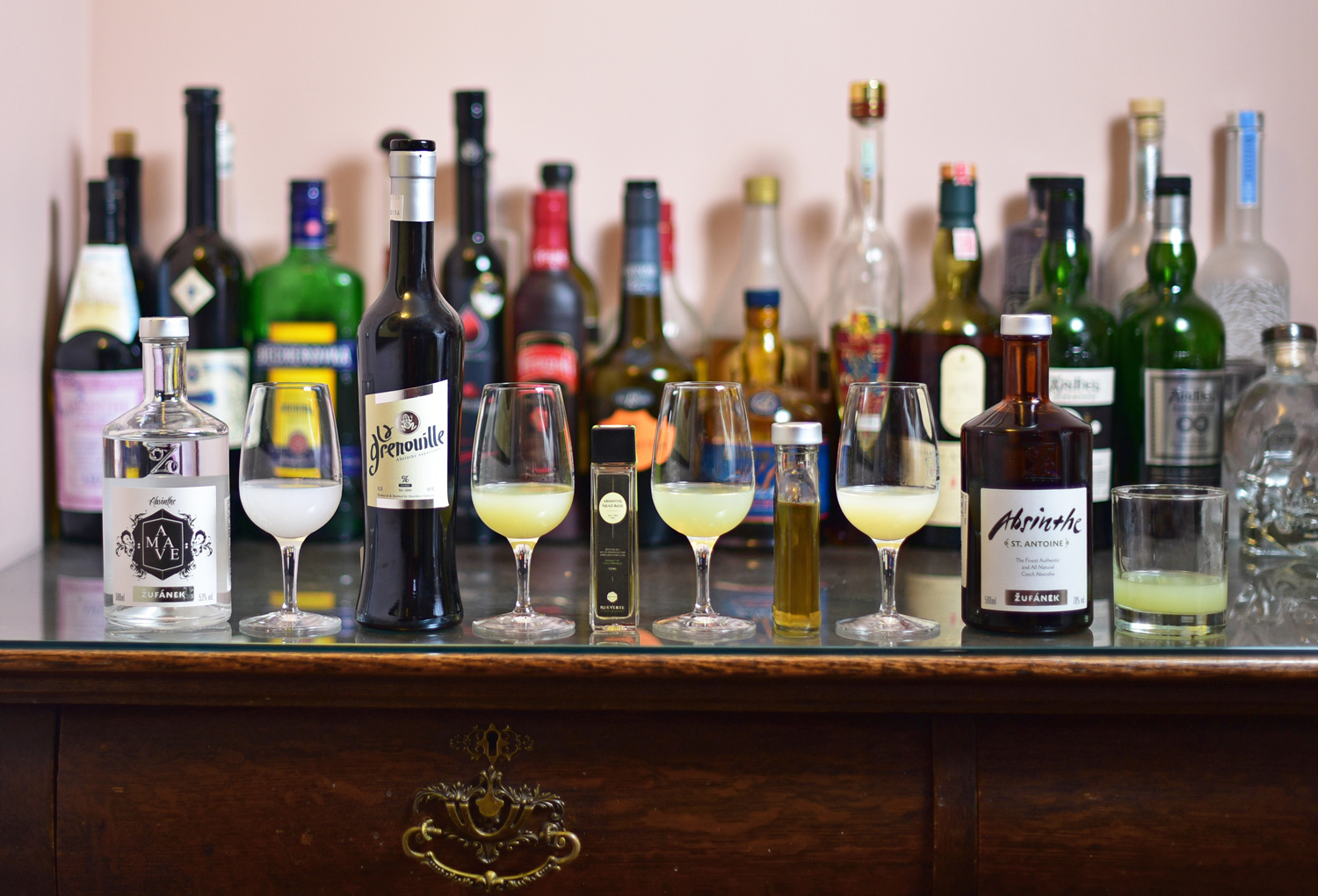As we’ve previously discussed, there is a long tradition of herbal spirits in Czech Republic, and absinthe has been a subset of that tradition for well over a century. We’ve visited the world’s oldest distillery turned Czech alcohol heavyweight, and the rural beekeeper obsessed with the Green Fairy. Now comes the moment of truth: what are these Czech absinthes really worth?
It’s been almost a year since I first started planning my trips to the Moravian distilleries of the Green Tree and Žufánek. Since then, I prepared myself for today’s final tasting by trying literally dozens of absinthes on a near-daily basis. I became a regular on absinthes.com, tried the most popular brands and the more arcane ones, figured out what my favorite style of absinthe is, complained at Maison Premiere in Brooklyn when they put too much water in my glass, laughed at the dinky hotel bar that calls itself an authentic absinthe hideout in Montreal, and even followed in the steps of Dali and Hemingway at Bar Marsella in Barcelona.
Warning: Absinthe tastings can leave you seriously buzzed. Not because of some thujone bullshit, but because it’s a very strong beverage that is, more often than not, consumed without food (you can’t really taste your food with all the anise in absinthe anyway, especially if you don’t dilute it a lot). I typically water my drink down to around 25% alcohol, which is just low enough to have the louche effect occur in full force — provided that the absinthe louches at all. This is significantly less water than the ratio that’s generally recommended, which is between 3:1 and 5:1. I also don’t feel the need to add any sugar. In this day and age, who even remembers what sugar cubes look like? And who is aware that the sweet geometric lump was invented in the 1840s in the town of Dačice (then in Moravia), where it now has its own monuments? Yes, monuments with an s! Just look here and here!
Although I’m presenting my findings sequentially, I tried all these absinthes side by side, over multiple rounds of blind tastings, often next to non-Czech absinthes for comparison. That’s a hell of a lot of booze. Then (though not the same days) I tried them in some of the better-known absinthe cocktails out there. And finally, I might even have found a cure for the common cold. So let’s get started!
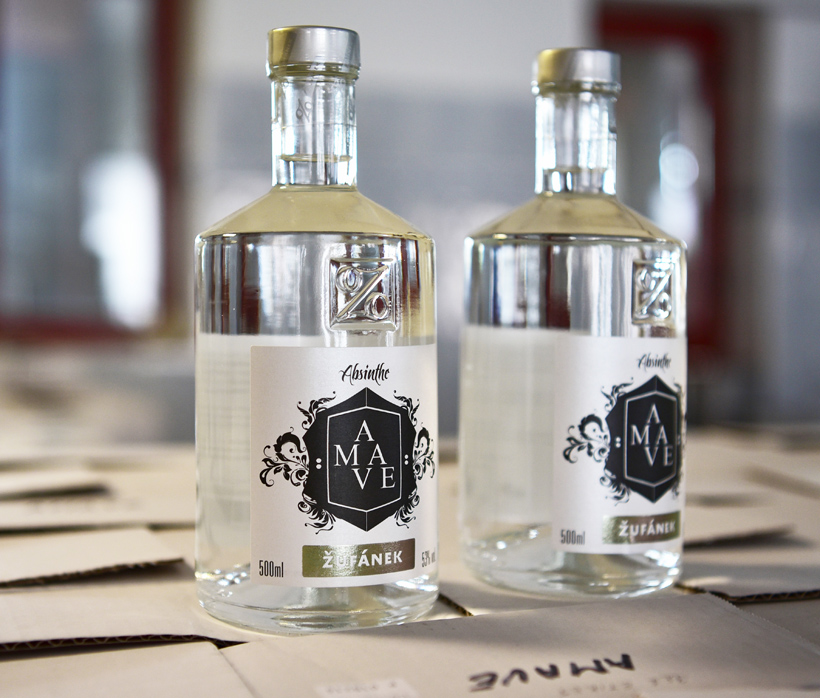
Absinthes “au naturel”
diluted to 25% alcohol using cold water, no sugar
First, the Green Tree, by Granette & Starorežná… Compared to other absinthes, the nose is rather faint. It smells a bit sweet, almost like mint, not too much like anise, with a hint of bitter herbs. In the mouth, it tastes like sugared water and mouthwash, with the same hint of herbal bitterness. It feels as if the flavors haven’t blended well. Overall, drinkable but not very pleasant. Better than Listerine because there’s more booze in it. And don’t believe that it’s improved by the so-called “Bohemian ritual” of adding a sugar cube on fire over a fancy spoon: this practice, invented in the 1990s, doesn’t make much of a difference.
Shortly after the tasting, I actually received a reply to an email I had sent to Granette & Starorežná several weeks earlier, asking them to confirm the production process. Here’s what they wrote:
Production process of our Absinth is following:
1st step – precisely weighing out of herbs (mainly anise, wormwood, fennel)
2nd step – maceration, which is under way several days in still
3rd step – distillation
4th step – production of spirit Absinth – mix alcohol, distillate, sugar and so on
5th step – evaluation of produced spirit – check in laboratory, sensory assessment – smell, color, taste
6th step – filtration of spirit
In other words, the Green Tree first makes a normal absinthe, and then mixes it with grain alcohol, sugar, and food coloring. Plus aromas, according to the bottle (if you make the effort of reading the back label, the ingredients are all listed). It’s more like an overproof (70% alcohol) flavored vodka. It’s very disappointing, but at least that explains the taste. In this new light, I would expect it to fare better in cocktails — I guess that’s why it’s available in neon green, red, or black. We’ll see in a minute! At least the bottle only sets you back something like $10 US.
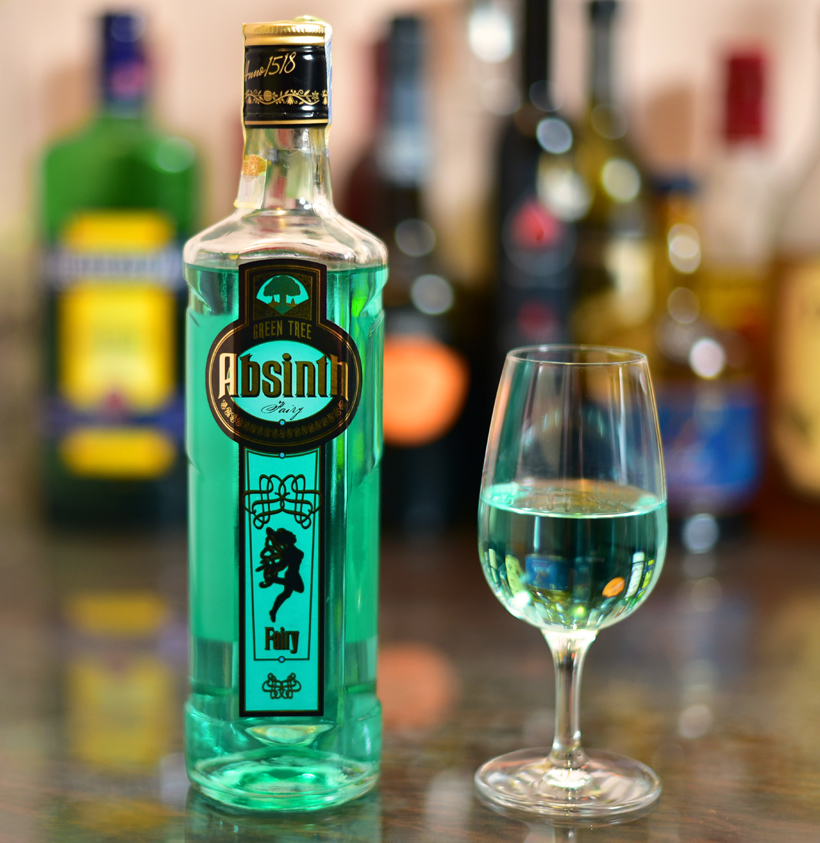
I also have a bottle of their Koruna, made for the Australian market, supposedly using a similar absinthe base, minus the food coloring and flavors, plus bits of herbs in the bottle. A natural product, bottled at 73% alcohol. “Most Czech connoisseurs now consider Koruna to be the very best there is”, proclaims the back label (though I must wonder, how do all those Czech connoisseurs acquire bottles of something that’s only available for sale in Australia?). “It is fit for a King” (hence the name Koruna, which means crown in Czech). It’s a very kitsch bottle for the “very best [absinthe] there is”, but we’re not gonna judge the book by its cover.
The nose is alright, I smell herbs other than anise, with bitter notes. But then I take my first sip… What the hell is that? This is so bitter!!! And there’s no trace of sweetness, unlike in some other hardcore herbal liqueurs like Chartreuse. The unbearable bitterness masks anything else that might be there, and it’s pretty harsh. Maybe the fans of super bitter spirits might enjoy it, but I definitely don’t. Poor Australians! And this bottle retails for around $90 US, believe it or not.

Moving on to the Žufánek absinthes… The most standard product of their absinthe line is the Saint-Antoine. Good news for the purists: it louches (the Green Tree and Koruna, having a low anise content, do not). Personally, though, I’m not obsessed by the nuances of the louche effect. The nose is at first slightly odd, it has a lot of the flavors I expect in an absinthe, a slight bitterness, plus some strong vegetal notes that I haven’t found in any other absinthe and which require some time to get used to. This is less obvious but still noticeable in the mouth. Otherwise there’s anise but not too much, and the flavors are interesting and well integrated. It’s certainly night and day compared to the Green Tree stuff! What puzzles me is that I smelled some Saint-Antoine while it was macerating in the still, and I actually tried it in a bar in Olomouc the next day, and I don’t remember tasting the strange vegetal notes. Does my bottle come from a different batch, or do one’s surroundings really affect one’s senses so much? As it stands, I’d drink it again but it’s not my favorite. At around $20 US in Czech Republic ($40 on absinthes.com), it’s still pretty affordable.
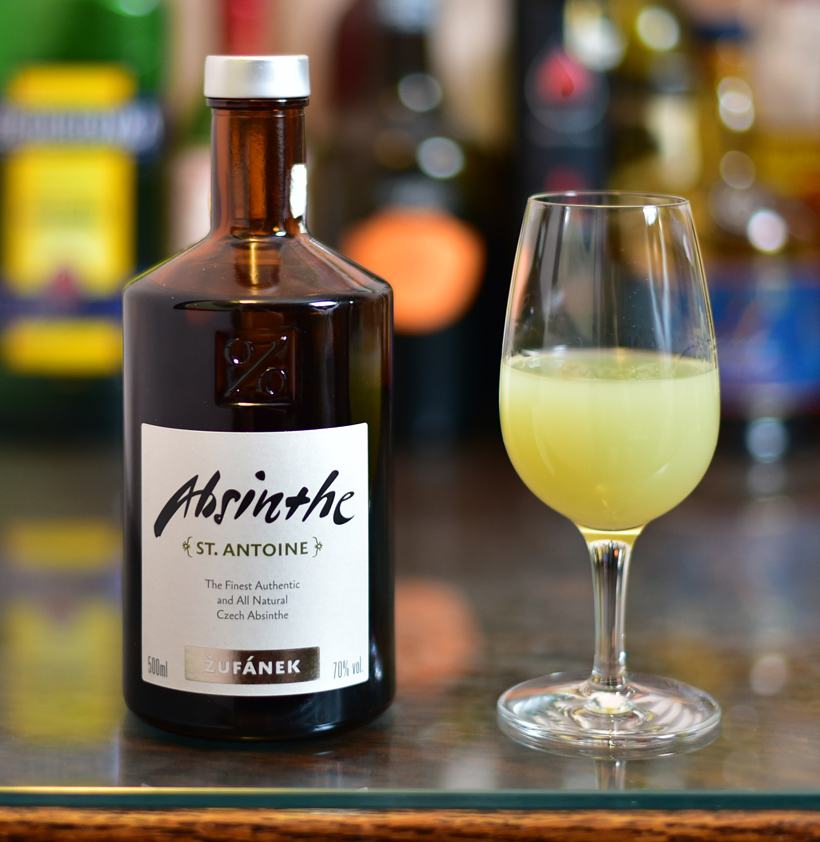
La Grenouille (65% alcohol) is another green absinthe. It smells mostly minty and citrusy, and a bit peppery. That citrusy smell is quite aggressive, triggering memories of lemon dish liquid (it gets better on the second sniff). I find the same aromas on the palate, with probably more anise than the Saint-Antoine, and a bit of sweetness. In terms of quality, it’s on par with Saint-Antoine, but very different in style, with a one-of-a-kind flavor profile, all for about $25 US in Czech Republic. It’s so strong that it’s hard to taste any other absinthe afterwards!
The Mead Base absinthe (65% alcohol) is also an original Žufánek creation — I’m not aware of anything similar produced elsewhere. The nose is sweet, with notes of honey and oak (presumably from the mead), plus some citrus. It’s a bit aggressive but less so than La Grenouille. Same in the mouth, plus some anise (maybe I’ve just had too much absinthe but I notice the anise less and less on the nose). It’s interesting, in a good way, and I like it very much. I just found out that Žufánek has released a new batch too. It may not be completely identical, but at $30 US in Czech Republic, don’t hesitate to give it a try!
Žufánek’s blanche, the Amave, is very similar to the Saint-Antoine, minus the vegetal notes. The nose is mostly anise with some soap, but overall subtle, and the taste is similar, with a bit of sweetness. A good absinthe, though not overly complex, for the same price as the Saint-Antoine.
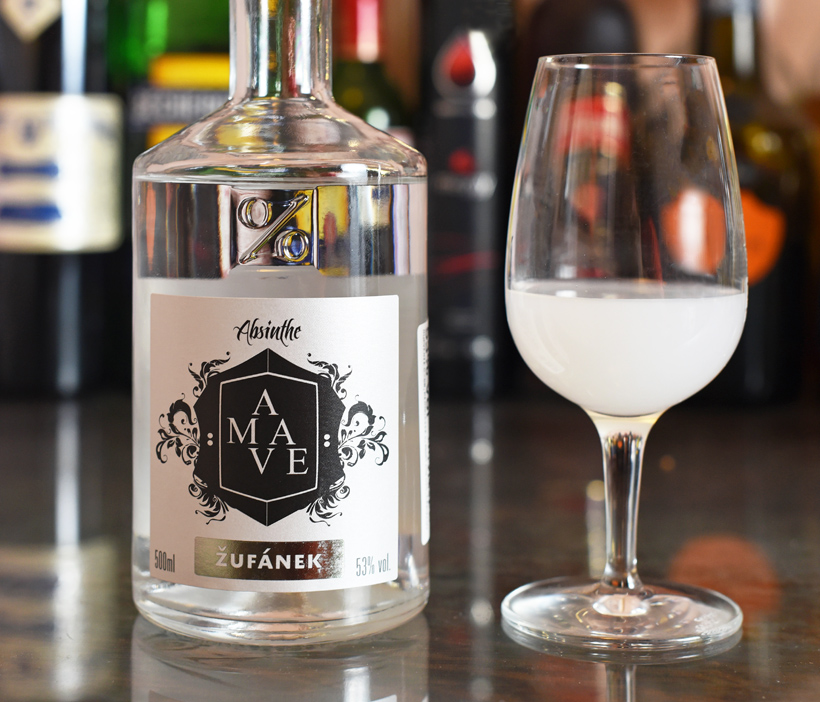
Then we have the reserve absinthes. L’Ancienne (65% alcohol), which has been discontinued and is now impossible to find, has a very nice louche that progresses slowly as you add water. The final color is a sort of pale yellow with not much of a green hue — very few absinthes are actually green once watered down, and the aged ones even less so. It boasts a nose that’s quite characteristic of the aged absinthes made with wine brandy: quite sweet, rich and complex but never aggressive, with notes that I’m not really able to recognize (during one tasting I wrote “spice bread”, though that’s not exactly it; another time, I wrote “good body lotion”). It’s an amazing smell, more subtle and nuanced than the mead base absinthe, although the two do have things in common. The taste is similar to the nose; very well balanced, with anise, herbs, no trace of bitterness, and a lot of sweetness (reminder: none of these absinthes contain any added sugar).
The new Justifiée & Ancienne (65% alcohol) seems to already be out of stock, but there should be more coming in the not-so-far future. It’s very similar to L’Ancienne, maybe (just maybe) slightly more fragrant on the nose. I can tell the two smell slightly different, but I can’t quite explain how so. I’m tempted to say that the J&A smells more like seeds (fennel, coriander) than herbs. The good news for those who never had a chance to try L’Ancienne is that the two are equally good. They came out on top in all my blind tastings, and compare very favorably with the best French and Swiss absinthes I’ve tried. The fact that they’re quite sweet and absolutely not bitter is a plus for those who, like me, are generally adverse to bitter herbal spirits. It’s a pretty good deal at $55 US in Czech Republic, a smidge less so at $85 US on absinthes.com.
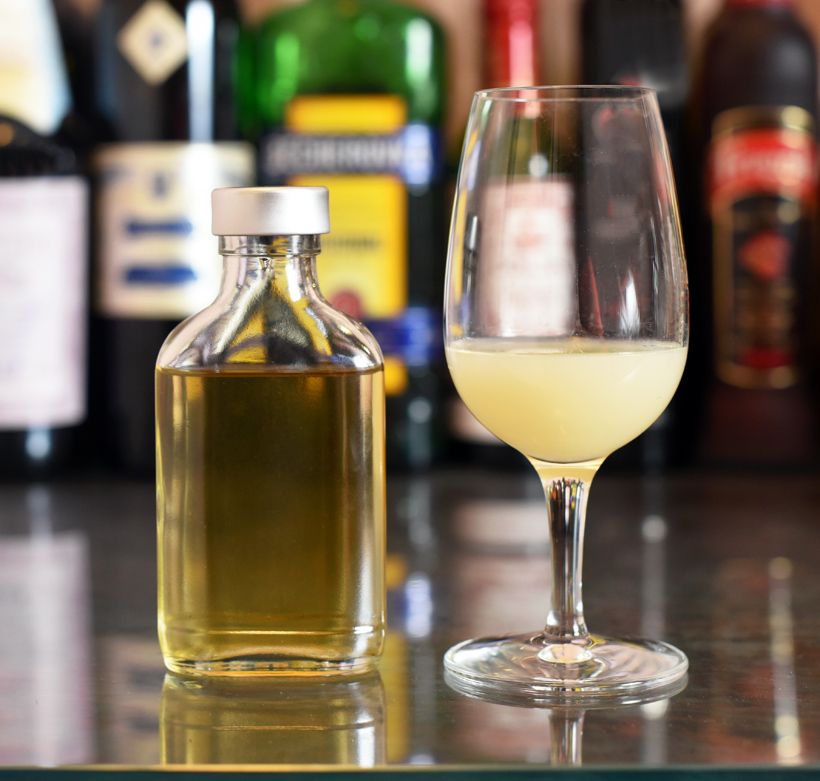
Absinthe Cocktails
A lot of the “popular” absinthe cocktails are of the 2-ingredient variety (like with other spirits, ultimately). Just combine absinthe with any ordinary mixer and give it a name. Or mix it with vodka or bourbon and make a mad dash for the toilet bowl. Other drinks simply substitute absinthe for the main spirit in famous cocktails. Let’s review some of the better options.
Absinthe and Coke is a tried and true combination. If you use the Saint-Antoine, you get something that still tastes like absinthe and is reminiscent of Kofola, a soda created by the Czechoslovak Research Institute of Medicinal Plants in 1959 that substituted for bourgeois Coca-Cola during the Communist era and is still popular today. This is definitely a cocktail I’d have again. With the Green Tree absinthe, it turns into a more generic Coke and booze, with minty notes. It’s still OK — no worse than a Bacardi & Coke or a Jack & Coke) — but much less distinctive.
Absinthe and pink grapefruit juice is a bit more unexpected. I only tried this combination with the Green Tree; it isn’t all bad, but tastes a bit like a cocktail at a frat party (think: bad screwdriver), unless you add a lot of grapefruit. The herbal hint is pleasant, and the green color is totally masked by the pink grapefruit (i.e., you don’t get a yucky brown). If you’re allergic to natural products, use grapefuit soda instead of grapefruit juice, and it becomes a somewhat plausible alternative to Gin & Tonic. I would try to add some ice, mint leaves, and lime, which would turn the drink into a kind of mojito.
And speaking of mojito… The absinthe mojito, a regular mojito wherein you substitute absinthe for the rum, shows the same results as the absinthe and Coke. With one of Žufánek’s absinthes, this is a cocktail worth trying: the absinthe goes well, and you can taste it. It’s not exactly a mojito anymore, but it’s very enjoyable. With the Green Tree, the light green color is still visually appealing, and it doesn’t taste all that different from a regular mojito, without the rum (duh). The Listerine flavor pairs well with / is masked by the mint, which is a good thing. Would I drink it again? Yes. Is it better than a regular mojito? No. Expect to get drunk fast, if that’s your thing.
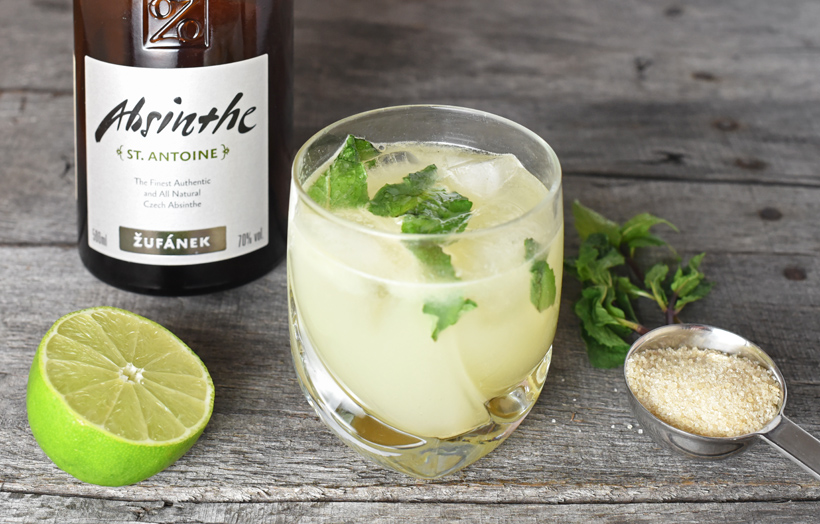
Back in the two-ingredient category comes the Death in the Afternoon, although Champagne can hardly be called a mixer. This one was invented by Hemingway himself: “Pour one jigger absinthe into a Champagne glass. Add iced Champagne until it attains the proper opalescent milkiness. Drink three to five of these slowly.” Sure, it’s very decadent indeed, Ernest. But it also tastes vile. With any Žufánek or French/Swiss absinthe (1 volume absinthe, 2 to 3 volumes champagne), the two really don’t go together, but it will get you drunk in no time (no need to drink 3 to 5 of them). With Green Tree absinthe, the flavor is arguably better, though I wouldn’t claim it tastes good. It’s a bit like drinking a vodka-Champagne, which is something that nobody ever drinks. Again, it will get you drunk in no time, even for very little money if you use a Bohemia Sekt sparkler.
What a contrast between the Granette & Starorežná and the Žufánek absinthes! I’m unlikely to drink the Green Tree absinthe-flavored vodka again of my own will. It’s really a shame that they don’t just bottle their absinthe straight out of the stills, without additives. Even in cocktails (which is, to be fair, partly how the distillery recommends using it), it doesn’t exactly shine, as the best you can expect is for the other ingredients to mask its flavor and downplay its high proof. The Žufáneks, on the other hand, are a great find. I would drink all of them again: the young ones have their flows (the vegetal notes of the Saint Antoine, the aggressive citrus nose of La Grenouille), but the aged ones are truly exceptional. They can also be used to produce some nice cocktails, such as the absinthe mojito or the absinthe and Coke.
It’s interesting to note how different my tasting notes were on some occasions, based on tasting sequence and sometimes even on the day of the tasting. I’ve done my best to stick to reporting the characteristics that I recorded over multiple blind tastings of the same absinthe. My preferences, however, were fairly consistent. Thinking back to my original expectations, I saw neither the mafia nor the bathtub, and learned a whole lot about Czech herbal liquors. There are other producers, of course, but they’ll have to wait until my next trip. With this series of posts now closed, I can now reduce my daily Czech absinthe consumption and rediscover other pleasures, such as… Moravian wine…
And as for that cold remedy… 5 g Elixir Vegetal de la Grande-Chartreuse, 15 g absinthe (70% alcohol), 40 g water. Repeat slowly until you feel better!
